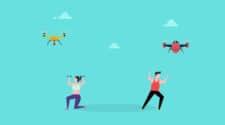Also known as stria, striae or striae gravidarum, stretch marks are white or red lines across the skin usually found on the abdomen, breasts, thighs, and glutes.
Stretch marks most often occur due to rapid weight gain, pregnancy, puberty or some form of health condition such as Cushing’s syndrome. They can also occur due to family history though this is less common. For muscular individuals, they can also be found on the shoulders and upper arms due to the rapid increase in muscle size frequently as a side effect of anabolic steroid use. Essentially, they are due to an inability of the skin to keep up with the development of the body and therefore, is pulled upon. This causes a contrast in colour and visible lines upon the skin.
It’s important to note that stretch marks in themselves are not harmful nor dangerous. Stretch marks are a skin condition that “rarely causes any significant medical problems but are often a significant source of distress to those affected.” So, whilst they may not directly cause harm to the individual’s health, the aesthetic can be a real problem for those who have them.
Laser stretch mark treatment is proving to be fairly promising
One of the main forms of treatment associated with stretch marks is laser removal. Yet, the effectiveness of this treatment is not yet fully known and is currently thought to be dependent on skin type.
In a 1996 study, researchers set out to examine the results of treating stretch marks using a 575-nm pulsed dye laser which has been associated with wound healing, particularly with scarring. The results proved to be promising with almost all instances of the stretch marks improving with the effects being maintained and improved 8 weeks’ post-therapy.
A 2008 study analysed the effectiveness of another form of laser treatment on immature striae (red stretch marks). The results showed great promise, with 55% of patients considering their treatment to be “excellent” as well as 40% of doctors. The researchers used a 1,064 nm long-pulsed Nd:YAG laser which is particularly helpful as it also has a low incidence of side effects.
In another study published just one year later that examined a range of current treatment methods for their effectiveness, the conclusion was drawn that “no single modality has been far more consistent than the rest.” Though, they added that the advances in laser treatment were encouraging for finding a completely effective form of treatment in the future.
It could depend on your skin type…
A 1999 study aimed to examine the effectiveness of laser treatments on different skin types. For those who do not know, the Fitzpatrick scale is a helpful chart that’s used to classify certain skin types and colours. It was first based upon an individual’s skin and eye colour. However, this ended up being confusing, and so it was changed to include how an individual’s skin responds to sun exposure. According to healthline.com, the scale is as follows:
Type 1:
- Skin colour (before sun exposure): ivory
- Eye colour: light blue, light gray, or light green
- Natural hair colour: red or light blonde
- Sun reaction: skin always freckles, always burns and peels, and never tans
Type 2
- Skin colour (before sun exposure): fair or pale
- Eye colour: blue, gray, or green
- Natural hair colour: blonde
- Sun reaction: skin usually freckles, burns and peels often, and rarely tans
Type 3
- Skin colour (before sun exposure): fair to beige, with golden undertones
- Eye colour: hazel or light brown
- Natural hair colour: dark blonde or light brown
- Sun reaction: skin might freckle, burns on occasion, and sometimes tans
Type 4
- Skin colour (before sun exposure): olive or light brown
- Eye colour: dark brown
- Natural hair colour: dark brown
- Sun reaction: doesn’t really freckle, burns rarely, and tans often
Type 5
- Skin colour (before sun exposure): dark brown or black
- Eye colour: dark brown to black
- Natural hair colour: dark brown to black
- Sun reaction: rarely freckles, almost never burns, and always tans
Type 6
- Skin colour (before sun exposure): black
- Eye colour: brownish black
- Natural hair colour: black
- Sun reaction: never freckles, never burns, and always tans darkly
Interestingly, the results showed that those with type 4 skin made no improvement with their stretch marks whilst type 6 skin resulted in hyperpigmentation (became even darker than the surrounding skin) in response to a 585 nm pulse dye laser. A short-pulsed CO2 laser caused erythema (reddening) in type 4 skin as well as hyperpigmentation once again in type 6 skin. This led the researchers to conclude that those with stretch marks and type 4, 5, and 6 skin should avoid using laser treatment.
It seems as though laser treatments are not yet 100% effective for treating stretch marks, but they can dramatically reduce the appearance. The results are clearly dependent, however, on the individual’s skin type. Despite this, the field of laser treatments is proving to be fairly promising for future treatments.
Reference
- Comparison of the 585 nm Pulse Dye Laser and the Short Pulsed CO2 Laser in the Treatment of Striae Distensae in Skin Types IV and VI.
- Laser therapy of stretch marks.
- Stretch Marks: Treatment Using the 1,064-nm Nd:YAG Laser.
- Striae Distensae (Stretch Marks) and Different Modalities of Therapy: An Update.
- Treatment of Stretch Marks with the 585-nm Flashlamp-pumped Pulsed Dye Laser.









Leave a Reply